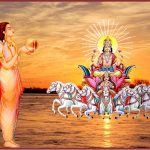This week Religion World will take you to Shri Kali Temple in Myanmar where the two percent of the Hindu’s struggle maintain in what is predominantly Buddhist country.
Indians have been present in Myanmar for over 2,000 years, but most came in the mid-19th century, when the country’s British rulers brought a million people from various parts of India to take up posts in the government and the army, build roads and railroads or engage in commerce and farming. And today Myanmar’s 2.9 million Hindu’s struggle to maintain their identity amidst the country’s historically dominant Buddhists. And one such cultural and religious centre is Shri Kali Temple in Yangon.
Shri Kali Temple is located in Yangon where little India resides. This temple was built by migrants from Tamil in 1871 when Burma was a part of India. This temple is famous for its colorful architecture and carved roofs that depicts portraits and images of many Hindu Gods and Goddesses.

History
During World War II, Myanmar (then Burma) was a major battleground between Japanese and Allied forces, with huge loss of life on all sides. After the war, the newly independent government considered most Indians “resident aliens,” not citizens, regardless of how many generations they had lived in the country.
In the 1960s, the military regime nationalized almost every business in the country. They seized the property of hundreds of thousands of Indians and forced them to leave the country. Those left behind remain deeply traumatized. They continue to occupy a much-diminished niche in both politics and business. Only after 1982 did the government establish a path to full citizenship for Indians, with the right to vote, own land and attend government institutions of higher education.
And even in these difficult situations the Hindu community in Burma hasn’t lost its Faith and Religion and continued to respect the traditions and rituals with the help of the Temples as religious centres.

The Temple
An extraordinary sensory experience, a dynamic collage of rainbow colors and evocative aromas, full of sound and fury—that’s the Shri Kali Temple in downtown Yangon. Yet miraculously, it’s also a soothing space, a place to be free and at ease with your maker.
Offerings of bananas, oranges, coconuts and lemons are bundled onto trays with garlands of roses, orchids, jasmine, marigolds, chrysanthemums, incense sticks and betel leaf to be solemnized before fire. Devotees with arms outstretched, palms upward, pressed, pay respect, bowing down to the power of the universe. The tilaka, a red dot of sandalwood paste or red kumkuma powder applied on the forehead to express devotion, is a reminder to see things not only with our eyes but also with the third eye, the mind’s eye, urging spiritual insight. Lighting oil lamps symbolizes the dispelling of ignorance and awakening of our divine light.

Kali is praised as the greatest of all deities, the fundamental power, raw energy, the ultimate reality. She is the mysterious, powerful goddess of transformation, time and change, representing the wholeness of life, a spectrum of opposites—light and dark, life and death, beauty and ugliness, motherliness and destructiveness. Supreme mistress of the universe, she is associated with the five elements. In union with Lord Shiva, Kali creates and destroys worlds. She is Shiva’s creative power. They must dance together.

A fierce aspect of goddess Durga (Parvati), Kali is pictured as multi-armed, naked or with a skirt of human arms and a garland of human heads. She is shown enraged with disheveled hair, bloodshot eyes, an open mouth with tongue poking out, holding a sword, a severed head (representing the ego), a cup to capture the blood, and standing on Lord Shiva’s body. This represents courage and acceptance of the way things are. Death cannot exist without life, so life cannot exist without death. Kali is also portrayed as the most loving of the Hindu goddesses, mother of the whole universe.
Built by Tamil migrants in 1871, this Hindu temple underwent a major restoration during 2011-12. Every day is celebrated, with special emphasis during Diwali festival of lights.
Must read Indian Temples in Foreign Lands : Angkor Wat – The Abode of Vishnu201
Must read Indian Temples in Foriegn Lands : Janaki Mandir, Nepal – The Birth Place of Sita









